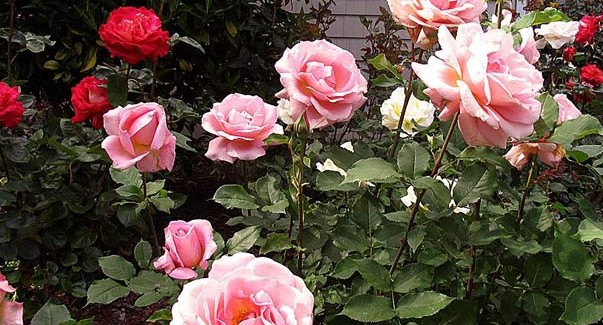Your cart is empty
Citrus Trees and Roses

Roses
Roses are my favorite flowers to grow in the desert. They are very easy to maintain, but keep the following in mind:
Buy roses that do well in the Southwest, such as Mr. Lincoln, Gene Borner and Don Juan.
Fertilize often. I like to use about 1/4 bag of steer manure every three to five weeks. I also throw a few banana peels in for good measure as an aphid barrier.
You will sometimes see small curved cuts in the leaves. Don’t worry because a leaf cutter bee is making her nest. She is considered a beneficial insect and she can’t do any real damage to your plants.
Sometimes it looks like snow just fell on the leaves. This is powdery mildew which can be controlled with a simple solution of 3 to 5 Tbsp. baking soda mixed with a couple of drops of dish washing soap per quart of water. Spray the leaves liberally every three to five days.
Also, make sure you get your roses ready for summer by mulching them with 3 to 4 inches of compost.
Citrus Trees
Citrus trees like to be basically left alone when it comes to trimming. If you must trim them, make sure you paint the trunk with white latex paint mixed with 50 percent water to protect them from the sun.
One of the best fertilizers I have used on citrus trees is plain, old steer manure. Use one bag for a full-size tree in February/March, one bag in May/June and one bag in September/October.
If you want to plant a few citrus trees, buy ones that are grafted onto sour orange root stock. Root stock of sour orange does much better in Arizona’s soil and is resistant to diseases that could give your tree an early death.
When you plant the tree, make sure to face the graft to the east and make a well at least twice as large as the canopy (drip line) and fill it often, about every three days, until established. Good drainage is critical. Make sure your hole drains within 24 hours. Once established, water every 10 to 14 days during the summer and every 20 to 30 days during the winter.
If you find a small caterpillar eating your leaves, leave him alone. He will eventually turn into a beautiful swallow-tail butterfly.

